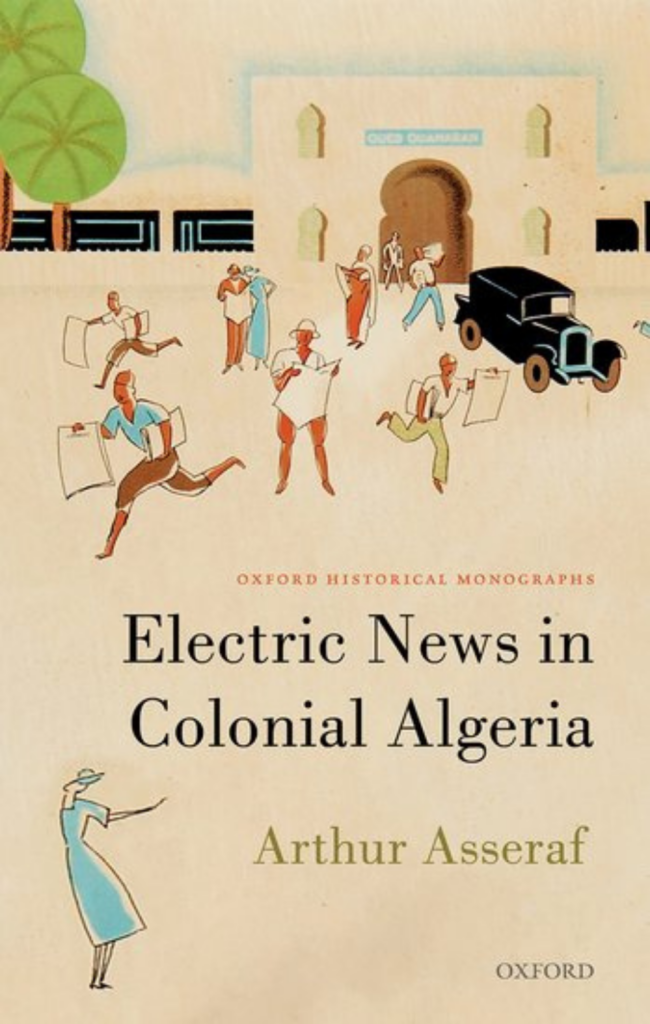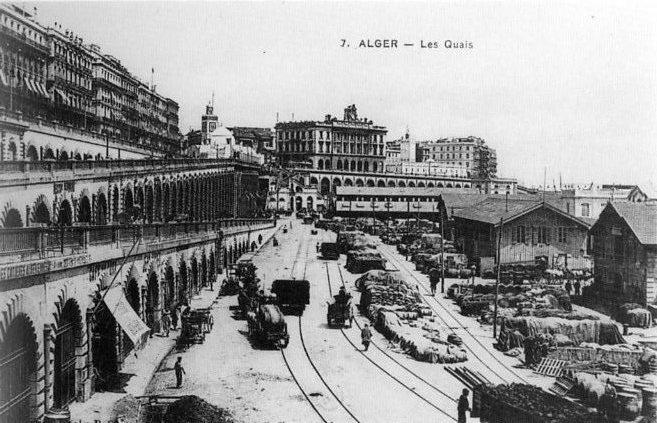
Electric News in Colonial Algeria offers readers an understanding of how new forms of media and ordinary people came into contact with one another with increasing frequency during the period of French colonial occupation in Algeria. The major argument of this work has two premises. First, the dominance of a new form of media does not mean that the older forms become irrelevant but rather that the new forms add to an existing media ecosystem. As an example, the popularity of cinemas as spaces to consume media did not mean that print faded away. Second, this expanded media density and diversity in form and content over the course of the colonial also increased the polarization of Algerian society. This density of media facilitated through technologies that gradually condensed space, served more as a divisive factor than a unifying one in Algeria’s efforts toward fostering nationalism.

When Asseraf uses the word “electric” in this work, he is referring to more than just the literal infrastructure of electricity. Changing media landscapes created social shocks in Algeria as well. To put it another way, the news was metaphorically electric as it circulated just as much as it was actually electric in delivery. In constructing his work this way, Asseraf digs into what new forms of media and their circulation meant for social actors as they were consumed, rather than focusing on the media itself as a mouthpiece for editors. Also central to this work is the tension between the colonial state’s attempts to control media circulation and the reality of Algerians’ practices surrounding media consumption. Circulation in colonial Algeria involved more than the information the state freely allowed to circulate. It was also a matter of censorship and the options for circumventing restricted flow that ordinary Algerians participated in.
Although this book covers the entire French colonial period in Algeria, it gives the most weight to the early decades of the twentieth century. This serves as a strength since works on Algerian history have a tendency to pay more attention to flashpoint moments in the nation’s history, especially its war of independence from 1954 to 1962 and, to a lesser extent, the early period of colonial rule following French occupation in 1830. It is less common to see a work like this, which offers us a solid sense of what life was like for everyday Algerians in the early twentieth century.
Chapter One serves primarily to present background information constructing the relationship between early print in Algeria and the so-called civilizing mission of the colonial project. Chapters Two through Four likewise analyze various forms of media to help readers understand the increasingly diverse media landscape in colonial Algeria. The forms of media these chapters explore are, respectively, the telegraph at the turn of the twentieth century in Chapter Two; news, rumor, and songs about World War I in Chapter Three; and cinema and radio in the interwar period in Chapter Four. Chapter Five is distinctive, arguing that distance from nationalist struggles, such as those in Palestine and Libya, created the space for the Algerian press to debate a “proxy nationalism”. The conflicts in these places acted as a mirror, allowing Algerians to debate their own sense of national identity from a distance. More than anything, this chapter serves to complicate the neat divide we tend to place between foreign and domestic news.

The book’s introduction tackles a range of relevant historiographical issues: the relationship between media and nationalism, concerns about the dominance of technological determinism in previous works, and questions of directionality in circulation, flow, and blockage of information. Asseraf argues that the effect of media formats on circulation is subtle—essentially, he constructs his rejection of technological determinism by arguing that form does not bear too significantly on content, especially when considering how information circulates among human actors. In other words, the medium is not the message. As an example, Asseraf argues that the introduction of radio did not affect consumption as significantly as others have argued. News may have found new methods of spreading over time, but the act of spreading news was always more social in nature than anything else.
In a world where questions surrounding the relationship between the media ecosystem, the technologies that carry media, and political polarization have become increasingly salient to all of us, this work offers a historical perspective on how such processes have taken place in an earlier period. Furthermore, the book offers a perspective of these processes on the ground among everyday people, and not only at the state and private sector levels. Because of this, Electric News in Colonial Algeria is a highly accessible work that can be enjoyed by specialists and general audiences alike. Likewise, it is a book that those outside of the history and area studies fields can find fruitful, especially those with interests in media studies and anthropology.
Erin Kelleher is a third year PhD student in the Department of Middle Eastern Studies at UT Austin. Her research areas are print culture and its circulation in Tunisia, as well as the Ottoman Empire’s enduring cultural legacy in North Africa.
The views and opinions expressed in this article or video are those of the individual author(s) or presenter(s) and do not necessarily reflect the policy or views of the editors at Not Even Past, the UT Department of History, the University of Texas at Austin, or the UT System Board of Regents. Not Even Past is an online public history magazine rather than a peer-reviewed academic journal. While we make efforts to ensure that factual information in articles was obtained from reliable sources, Not Even Past is not responsible for any errors or omissions.



